SUMMARY
This is AI generated summarization, which may have errors. For context, always refer to the full article.
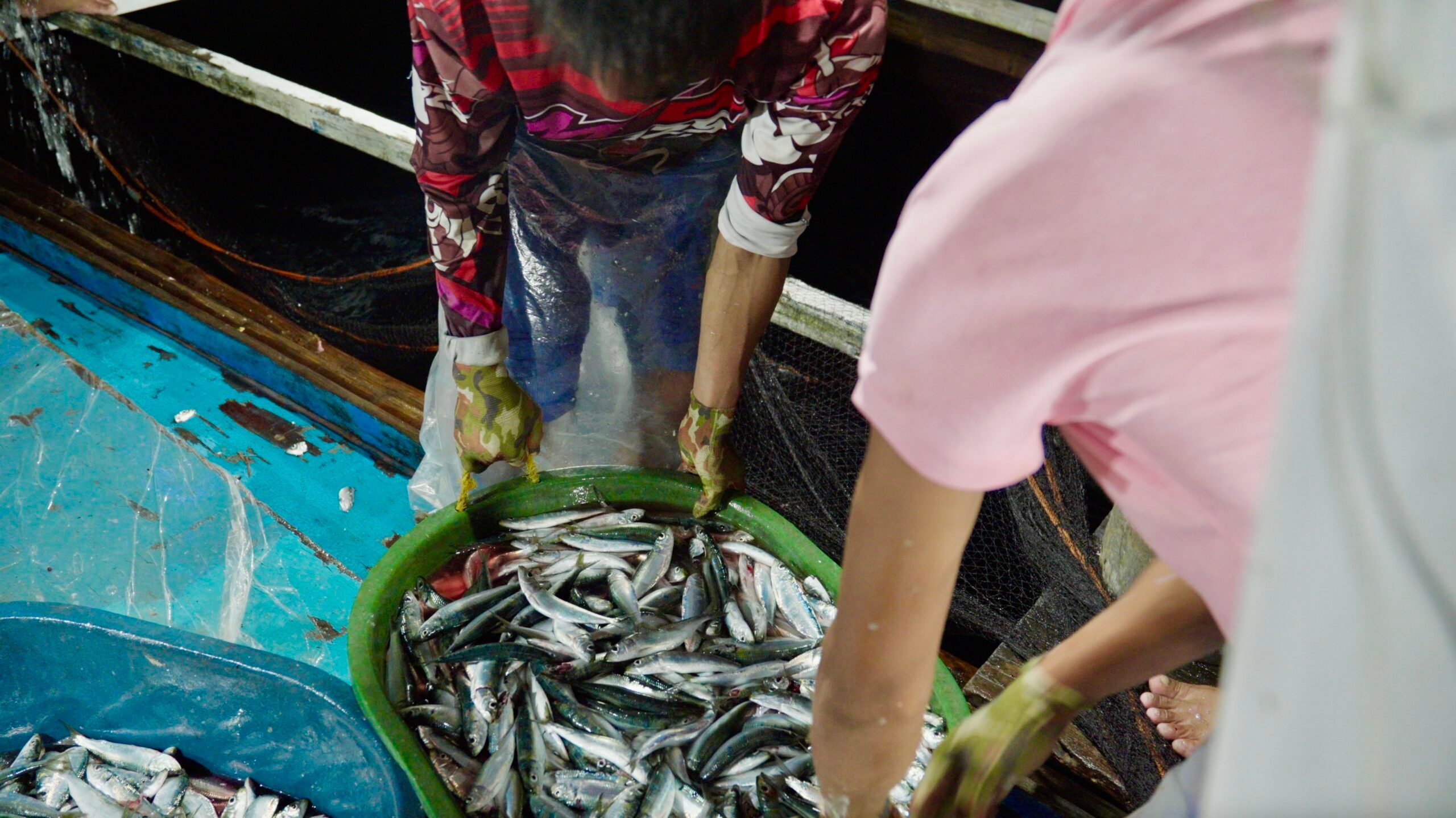
Last of two parts
Part 1: In a Northern Samar town, sardines are aplenty, but their fishers aren’t
NORTHERN SAMAR, Philippines – Even under threat from malpractices in the industry, sardines continue to dominate Philippine fisheries.
Yet abundance doesn’t automatically equate to progress, or equitability – if small fishers like Ronelio Bulan and his crew are to be added in the equation.
In a bid to modernize the sardine industry, the government signed into law Republic Act No. 8435 or the Agriculture and Fisheries Modernization Act in 1997.
The law wants to promote further processing of raw sardine catch, which would lead to more products and livelihood opportunities.
However, almost three decades later, small fishers and enterprises still need more support services from the government given the poverty incidence of many fishers today.
With the short shelf life of fresh sardines, and the lack of sardine management facilities in the province, Northern Samar’s coastal towns have to think of ways to make their fish last longer.
But it’s a problem that presents an opportunity: making fish last longer allows an expansion to post-processing industries that locals can make money from.
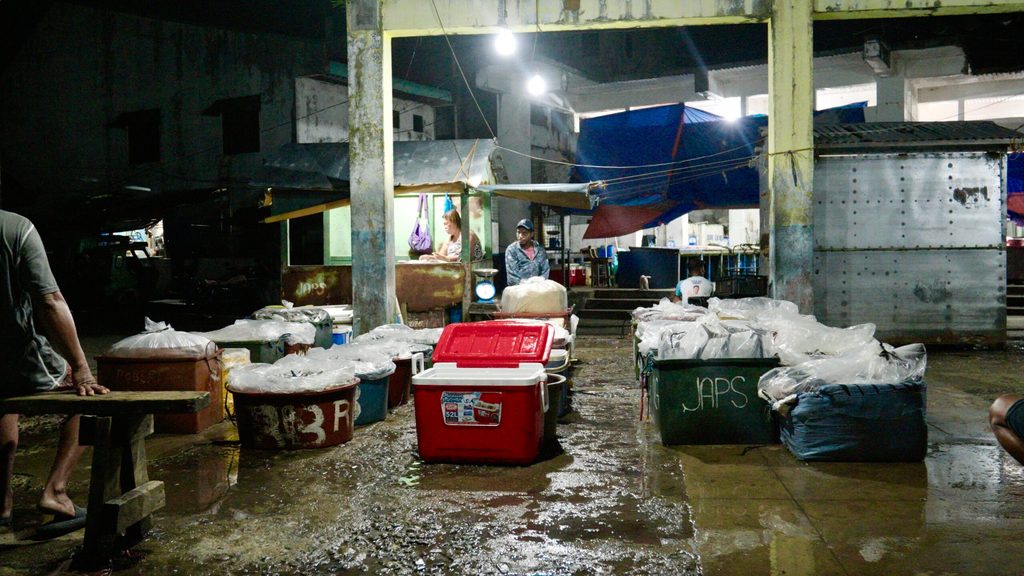
Livelihood in post-processing
This is what Mylene and Jonel Villacortes’ sardine post-processing business in the town of Victoria, a two-hour boat ride away from San Vicente on mainland Samar, wants to do.
Growing up in poverty, Mylene had always dreamed of having her own business. She met and married Jonel, whose family ran a fish port in neighboring Allen, which was their main source of income.
Following in the footsteps of Jonel’s parents, the couple acquired fishing boats, put up their own fish port when they moved to Victoria, and took it a step further by investing in a post-harvest facility.
“Kaya ngayon, nagkaroon kami ng idea na magkaroon kami ng ganitong processing area, kasi ang advantage namin sa iba, fresh ang isda from the sea, diretso kami process,” Mylene said.
(The reason why we had the idea to put up a processing area was because we have an advantage over others: the fish are fresh from the sea, and we are able to process them immediately.)
Prior to the establishment of the post-harvest facility, Mylene said their fish were easily spoiled because they had just a few buyers and an oversupply. This problem lessened when the processing facility was put up and they created products like bottled sardines, boneless bagoong (fish paste), tinapa (smoked fish), fish feed, and fish sauce, among other preservable products.

The Villacorteses own boats that would classify them as commercial fishers. Over in the fish port, just six of their 15 to 20 suppliers are commercial vessels, but they earn much more when working with them since commercial vessels have more fishing capacities than their municipal counterparts.
They have the capital to deliver their fish to Navotas and to big sardine brands like Young’s Town. They have no competition in the post-harvest business in their area.
Despite providing more business to commercial vessels, Mylene believes they are still supporting the small fisherfolk of their province.
“I don’t think na mawawalan ng opportunities ‘yung mga sa municipal area kasi hindi puwedeng pumasok ‘yung commercial talaga eh…. Wala akong nakikitang basehan na mawawalan sila ng opportunity kasi continue naman ang blessing nandiyan lang malapit lang sa kanila,” she said.
(I don’t think municipal fisherfolk lose opportunities because commercial vessels aren’t allowed to enter [the municipal waters] anyway…. I don’t see a reason for them to lose opportunities because their blessings continue in nearby waters.)
While engaging small fishers in their business, enterprises like the Villavorteses’ would need more support from the government.
The government’s National Sardines Management Plan (NSMP) seeks to make sardine fishing sustainable and equitable, recognizing the losses that fishers experience in post-harvest. It aimed, by 2022, to reduce post-harvest losses in all sardine fishery communities by 10%. But government has yet to provide updates about the progress of the NSMP.
Responsible agencies like the Bureau of Fisheries and Aquatic Resources are tasked to establish and upgrade post-harvest facilities like cold storage and ice plants.
Scientists, local governments, big and small fishers, local communities, and post-harvest sectors were consulted in the crafting of the five-year plan.
Empowered with a job, but unpaid care work remains
Most of the Villacortes’ 200 employees are wives of fishermen. Some are also part of a farmer and fisherfolk cooperative led by Martha Cadano, a fisherfolk leader in Victoria.
Many of the women from the 150-member, female-majority co-op are housewives who want to work and help their families earn. Apart from the Villacortes’ post-harvest facility, they also work in the couple’s other businesses, such as their catering and cockpit.
The women go out regularly to work, particularly when their husbands are at home. This system allows the couples to share the responsibility of childcare. Since many fishermen go out to work in the evening, they come back home to rest in the morning, which is when their wives leave for work.
However, when the women return from work, there are still things to take care of.
“Normal na po ‘yan. Lalo kapag maraming anak…. Minsan, kahit tulog na ‘yung mga bata, si babae nandoon pa rin, naglilinis, [at saka] ‘yung mga labahan, magtupi-tupi ka lang – it’s work. ‘Yung oras mo kino-consume mo pa rin. Imbes na nagpapahinga ka na, nandoon ka pa rin eh,” said Cadano.
(It’s normal. Especially if there are many children…. Sometimes, even when the kids are sleeping, the woman still has to clean, wash and fold laundry – it’s work. Your time is still consumed. Instead of resting, you still have to work.)
Cadano said the co-op allows for a space for women to support each other amid the tiring work of having a day job and running a household.
“Malaki ‘yung kahalagahan [ng espasyo] kasi kung wala ‘yan, hindi natin malalaman kung ano na ‘yung sitwasyon nila physically, mentally, spiritually. Kung wala tayong gagawing ganyan, hindi tayo magke-create ng isang venue na puwede sila maglabas [ng saloobin],” she said.
(The space matters significantly because if we did not have that, we would not know what their physical, mental, and spiritual situation is. If we don’t have this, we would not have a venue for them to vent what they feel.)
Keeping food on the table
Making the trade sustainable would require huge efforts and collaboration across local governments and private entities.
But at the bottom of all these efforts: small fishers and the health of the oceans. Locals understand well this symbiotic relationship between man and nature.
“Doon naman sa dagat talaga, ang kailangan lang natin is i-prevent ‘yung pagkasira ng dagat,” said Glenn Calipus, general manager of SABELANS. “Ang dagat naman kasi, mababantayan mo lang ‘yan, maaalagaan mo lang ‘yan, kusang magbibigay sa ’yo ‘yan ng yamang-dagat eh.”
(Regarding the ocean, what we need is to prevent its destruction. Because if you protect the ocean, if you take care of it, it will give its resources to you.)
SABELANS, or the San Bernardino LGU Alliance-Northern Samar, is the coalition of municipal agriculture officers of the coastal towns near the San Bernardino Strait, the body of water between Sorsogon and Northern Samar. SABELANS serves as a coordination ground for policy creation, particularly in shared waters.
During a meeting of SABELANS last October, the four agriculture officers of Allen, Victoria, San Isidro, and San Vicente were keen to adopt the national government’s NSMP to guide their future operations within their shared fishery management area.
The alliance’s adoption of the plan sets a precedent.
“This is actually the first alliance of local government units to have had this discussion for implementation. And there are no other LGU alliances that have adopted the sardines plan locally,” said Yray-Frossard in a mix of English and Filipino.

That one Friday evening in October, Bulan and his crew had been up for almost 24 hours already by the time they finished pulling up their sardine catch.
“Medyo napagod din at naantok [kami], pero siyempre, nawala ‘yung antok ‘pag nakakita ng maraming huli (We got tired and sleepy, but the drowsiness went away when we saw a lot of catch),” said Bulan.
Fishing is a physically demanding job with no guaranteed returns, but this fishing crew in San Vicente continues to take their chances if it means they get to bring something home to their families.
“Matutuwa din [pamilya ko] at may mabibili na kaming bigas (My family will be happy because we can finally buy rice),” he said. – Rappler.com
1 comment
How does this make you feel?










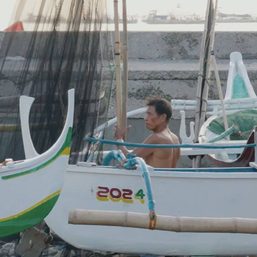
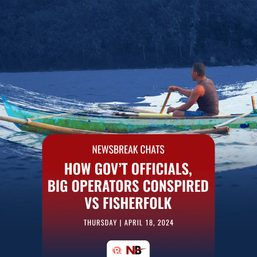
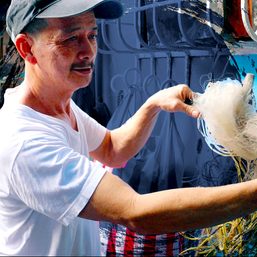
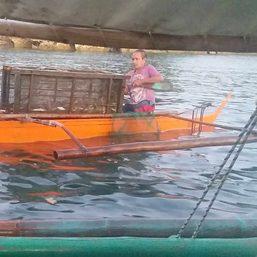
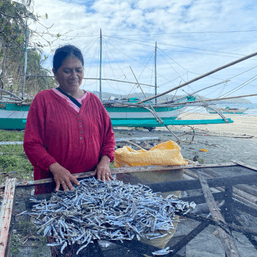

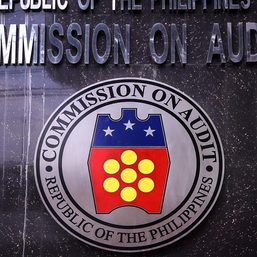
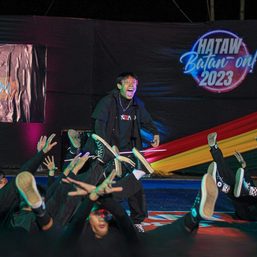
![[DOCUMENTARY] Our 15 kilometers: Small fishers fear losing municipal waters to big operators](https://www.rappler.com/tachyon/2023/12/our-15-kilometers-iuu-fishing-docu.jpg?resize=257%2C257&crop=279px%2C0px%2C720px%2C720px)






![[Rappler’s Best] The elusive big fish – and big fishers](https://www.rappler.com/tachyon/2024/04/The-elusive-big-fish-%E2%80%93-and-big-fishers.jpg?resize=257%2C257&crop=220px%2C0px%2C720px%2C720px)
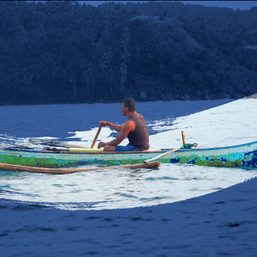
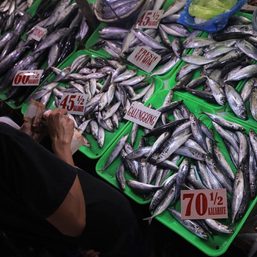
Thank you for shining a light on the dire situation of Philippine Fisheries particularly that of the municipal fishermen and their families.
I spent almost my entire work life (nearly 5 decades) doing business in this economic sector.
To me the elephant in the room in this story that has always been ignored is overfishing and destructive fishing by commercial fishing which has resulted and continue to result in critically depleted fishery resources.
There’s a lot of blame to go around but government negligence is primary. No serious comprehensive long term solution has ever been put on the table. For shame.
There are also short and medium solutions to alleviate the economic state of municipal fishermen while minimizing ecologically damaging near shore and coral area fishing by small fisherfolk.